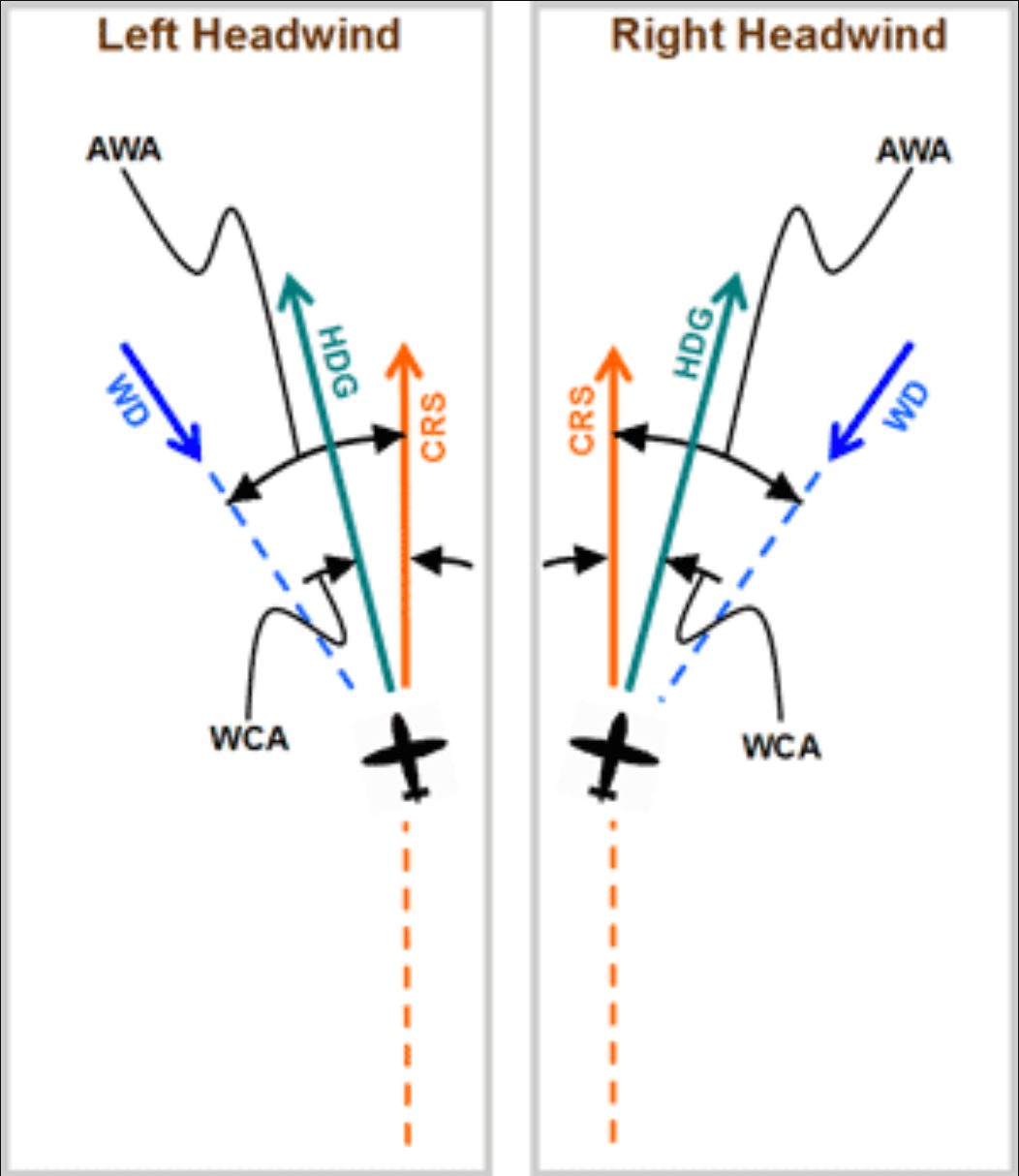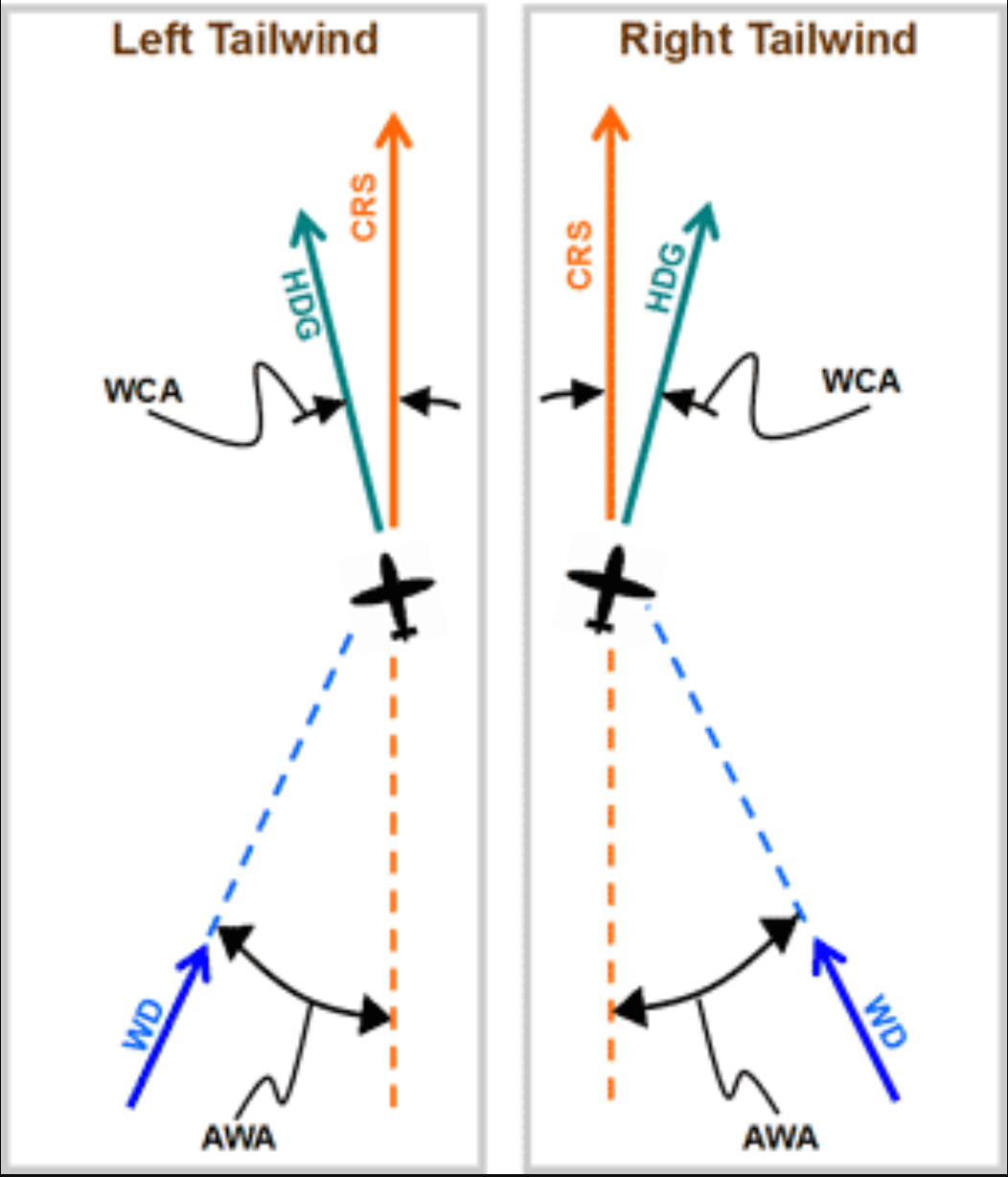Wind Correction Angle (WCA)
<templatestyles src="Template:Hatnote/styles.css" />


Wind Correction Angle (WCA), also known as the crab angle, is the angle between the desired course and the aircraft's heading required to maintain that course in the presence of wind. It's used to compensate for the effects of wind on an aircraft's ground track. The WCA is determined by the wind's speed and direction relative to the aircraft's true airspeed and desired course.
Detailed Explanation
What it is
WCA is the angle you need to "crab" (or steer) the aircraft to compensate for the wind blowing it off course.
Why it's important
Without WCA, the aircraft's ground track (actual path over the ground) will drift off course, especially in strong crosswinds.
How it's calculated
The WCA is determined by considering the wind's speed and direction, the aircraft's true airspeed, and the desired course.
Historical context
The need to account for wind effects in flight has been understood since the early days of aviation. Early pilots relied on visual observations and simple calculations to estimate WCA. As navigation instruments and flight computers improved, the process of calculating and applying WCA became more precise and automated.
Summary
WCA is a crucial aspect of aviation navigation that ensures aircraft remain on their intended course by compensating for the effects of wind. Its application, while initially relying on manual calculations, has evolved with technological advancements to become a key component of modern navigation systems.
